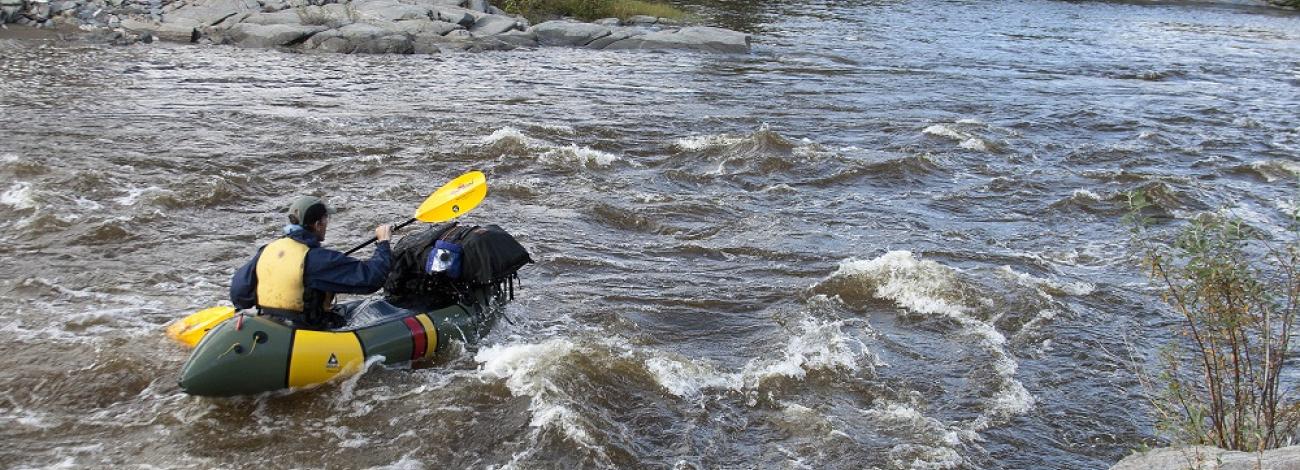
Birch Creek Wild and Scenic River
Birch Creek Wild and Scenic River flows from the windswept ridges and alpine tundra of the Steese National Conservation Area into the broad expanse of the Yukon Flats in central Alaska. The river offers one-week float trips notable not only for scenery and remoteness but for convenience – floaters can access both ends of the ‘wild’ river segment from BLM recreation sites along the Steese Highway. Although visited primarily in summer, Birch Creek offers many winter activities for fans of primitive backcountry experiences. For a few days each February, the Yukon Quest International Sled Dog Race between Fairbanks and Whitehorse attracts dog teams and mushers.
Find out more about other wild and scenic rivers on the Alaska National Conservation Lands page or on the wild and scenic rivers program page.
Outstandingly Remarkable Values
- Natural Setting
-
Natural Setting
Birch Creek flows through an area described as the Yukon-Tanana Uplands, a region of rounded ridges and valleys located between the higher mountains of the Alaska Range and Brooks Range. Vegetation ranges from alpine tundra to white spruce and paper birch forests. The mosaic of vegetation patterns on the landscape reflects past fire history, slope, aspect, and the presence or absence of permafrost.
Much of the bedrock along the waterway consists of Birch Creek Schist (named for this river). One of the oldest rocks in Alaska, the schist formed over millions of years as high temperatures and pressure compressed sediments from rivers, lakes, or oceans. Schist comes in many different varieties. You might see quartzite, garnet, biotite, muscovite and mafic schist. Minerals hidden within the schist may include pyrite, antimony, tourmaline and actinolite. Spectacular examples of Birch Creek Schist are found in rock outcrops where sheer rock walls have resisted the erosive action of water. Shotgun Rapids is one such location.
Also exposed in cutbanks along Birch Creek are melting ice lenses, part of the permanently frozen soils, or permafrost, underlying much of the river valley. Forests of short, stunted black spruce, deep sedge tussocks, and thick stands of willows grow above the permafrost in the shallow layer of soil that thaws for a few months each summer.
- Wildlife
-
Wildlife
The wildlife in this remote area see few humans. You may encounter moose, caribou, black or grizzly bear, wolf, lynx, beaver, and fox, but you are more likely to see their signs along sandbars.
Numerous riverside cliffs and bluffs support a dense population of nesting peregrine falcons. The boreal forest also supports large numbers of merlins, a smaller, tree-nesting falcon. Other raptors nesting along the river include frequently observed red-tailed hawks (Harlan’s dark phase), a few nesting bald eagles, and occasional osprey. The many wetlands and oxbow lakes support various waterfowl including scaup, pintails, widgeons, mallards, green-winged teals, white-winged scoters, buffleheads, goldeneyes, canvasbacks, shovelers, and even the occasional Trumpeter swan.
- Fish
-
Fish
Birch Creek has a high diversity of fish for an Interior Alaska river. The river provides excellent fishing for arctic grayling, and in the lower reaches, for northern pike. Sheefish and three species of salmon (chinook, chum, and coho) can also be found.
Before you go fishing please check the state regulations.
- History
-
History
The first settlers in this area were probably the Gwich'in Indians. They traditionally occupied portions of Birch Creek to harvest moose, waterfowl and fish.
Miners moved into the area in the early 1890s, just prior to the 1896 Klondike gold discovery. In 1893, Pitka Pavaloff and Sergei Cherosky, two Russian-Koyukon miners, panned for gold at what is now known as Pitka's Bar. The next year they started the Birch Creek Gold Rush when 100 men followed them back to their claims and began prospecting on adjoining tributaries. Entrepreneurs followed the gold seekers, blazing trails, freighting goods, and establishing road houses. Old miner and trapper cabins still dot the landscape along the river.
Birch Creek and the associated supply town on the Yukon River, Circle City, was virtually emptied of miners following the 1896 Klondike gold discovery further up the Yukon River in Canada. Mining resumed around Birch Creek following the Klondike strike, and continues through to the present day, with only a brief interruption during World War II.
